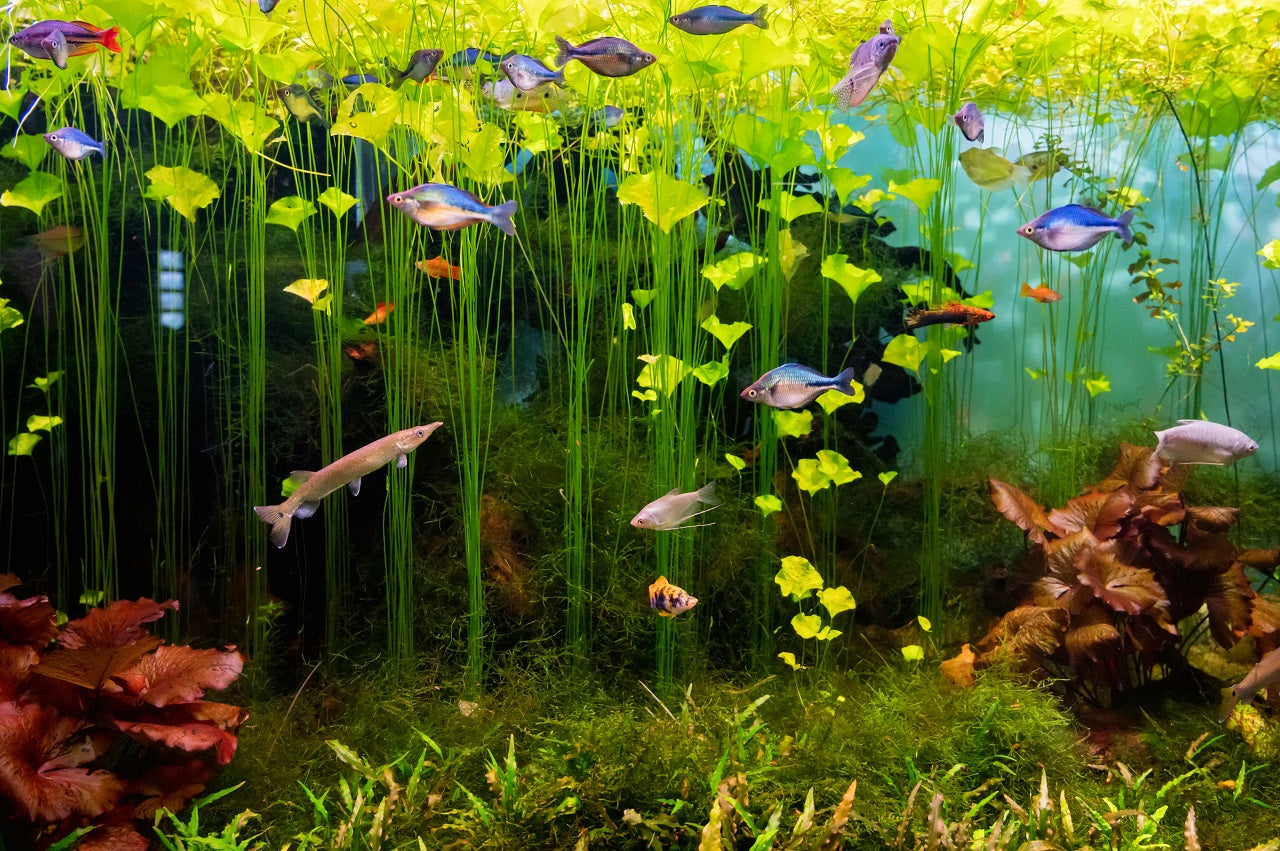Table of Contents
The aquarium hobby can be a source of relaxation, creativity, and a connection to the beautiful underwater world. As environmentally conscious individuals, we strive to maintain a delicate balance between enjoying the splendor of aquatic life and minimizing our environmental footprint. By incorporating sustainable practices into our hobby, we can create a thriving, guilt-free freshwater aquarium that respects our planet's finite resources and fragile ecosystems.
In this comprehensive guide to creating a sustainable freshwater aquarium, we’ll explore the various elements of responsible aquarium keeping. We will discuss the importance of ethical sourcing of live fish, plants, and invertebrates, highlighting our commitment to providing the highest quality, most sustainable aquatic life to our customers. Additionally, we will delve into energy-saving strategies, such as efficient equipment choices and energy conservation measures, which can reduce your aquarium's ecological impact. Finally, we will share low-impact aquascaping tips and sustainable substrates, enabling you to create an eco-friendly underwater haven for your aquatic friends.
Join us as we delve into the world of sustainable freshwater aquarium keeping, where beauty, responsibility, and ecological mindfulness converge, allowing you to seamlessly blend a captivating hobby with a steadfast commitment to environmental stewardship.
Ethical Sourcing of Live Fish, Plants, and Invertebrates: Embracing Sustainable Aquarium Life
The foundation of a sustainable aquarium is built upon the ethical sourcing of aquatic life. By choosing responsibly-sourced fish, plants, and invertebrates, you actively support sustainable practices and help protect the world's aquatic ecosystems.
1. Choose Captive-Bred Fish and Invertebrates
Opt for captive-bred fish and invertebrates whenever possible, as these species are more adaptable to aquarium life and help reduce the pressure on wild populations.
2. Sustainable Aquatic Plant Selection
Select aquatic plants propagated through tissue culture or other sustainable methods, which help preserve natural habitats and maintain healthy plant genetics.
3. Research Collection Methods
Investigate the origins and collection methods of the aquatic life you purchase, and support suppliers who demonstrate a commitment to responsible, sustainable practices.
Energy-Saving Strategies: Reducing Your Aquarium's Ecological Impact
Conserving energy is a crucial aspect of sustainable aquarium keeping. Here are some tips to help you create a more energy-efficient aquarium:
1. Efficient Equipment Choices
Opt for energy-efficient equipment, such as LED lighting, variable-speed pumps, and programmable heaters, which can contribute to significant energy savings over time.
2. Energy Conservation Measures
Consider implementing energy-saving practices, like using timers for lights and appliances to ensure they run only when necessary and investing in proper tank insulation to maintain stable temperatures with reduced heating requirements.
Low-Impact Aquascaping: Creating an Eco-Friendly Canvas for Your Aquarium
The art of aquascaping plays a vital role in designing a beautiful and sustainable aquarium environment. Embrace low-impact aquascaping techniques to minimize environmental impact:
1. Sustainable Substrate and Hardscape Materials
Choose environmentally-friendly substrates, such as recycled glass or sustainably harvested soil, and hardscape materials made from renewable or salvaged sources.
2. Avoid Invasive Plant Species
Refrain from using invasive aquatic plants, which can pose a threat to local ecosystems if accidentally introduced. Instead, opt for native or non-invasive species to maintain ecological harmony.
3. Support Nature-Inspired Aquascaping
Embrace nature-based aquascaping styles, such as the Dutch or Iwagumi styles, as these designs often prioritize sustainability and mimic natural environments conducive to a harmonious, low-impact aquatic habitat.
Maintaining a Healthy, Sustainable Aquarium: Long-term Eco-Friendly Care
Sustainable aquarium practices extend beyond the initial setup phase. Establishing long-term sustainable care helps maintain a healthy, eco-conscious underwater ecosystem:
1. Water Conservation Techniques
Conserve water through responsible aquarium maintenance practices, such as reusing wastewater to fertilize houseplants or water your garden or minimizing water changes by maintaining a well-balanced aquarium environment.
2. Sustainable Fish Food and Supplies
Select high-quality, sustainable fish foods and supplies to support the overall health and well-being of your aquarium inhabitants while minimizing waste and strain on natural resources.
3. Regular Monitoring and Adjustments
Track your aquarium's water parameters, energy consumption, and overall health, and make adjustments as needed to ensure long-term sustainability and maintain a stable, thriving aquatic environment.
Combining Hobby and Sustainability for a Rewarding Freshwater Aquarium Experience
Creating a sustainable freshwater aquarium is not only a testament to your commitment to environmental stewardship but also a gratifying journey that celebrates the harmony between aquatic life and responsible hobbyist practices. Embracing ethical sourcing, energy-saving strategies, low-impact aquascaping, and long-term sustainable care enables you to experience the joys of aquarium keeping while actively contributing to the preservation of our planet's resources and ecosystems.
Let Splashy Fish be your trusted resource for the highest quality fish, plants, invertebrates, aquarium supplies, and pet fish accessories that support your eco-conscious efforts and foster a bountiful, thriving underwater world. Together, we can cultivate a passionate, responsible aquarist community dedicated to creating beautiful, sustainable freshwater aquariums that stand as beacons of environmental awareness and conscientious stewardship.



























